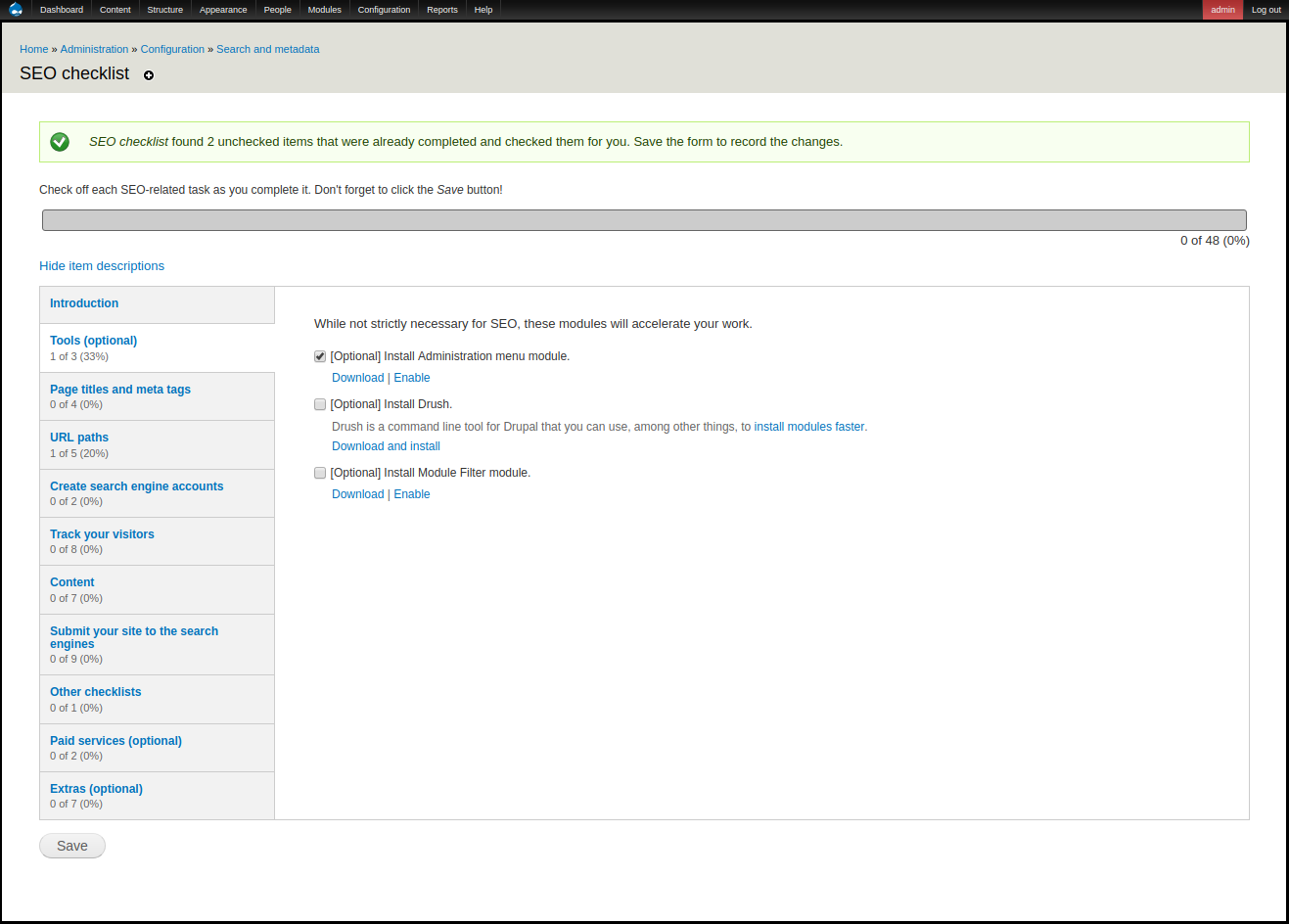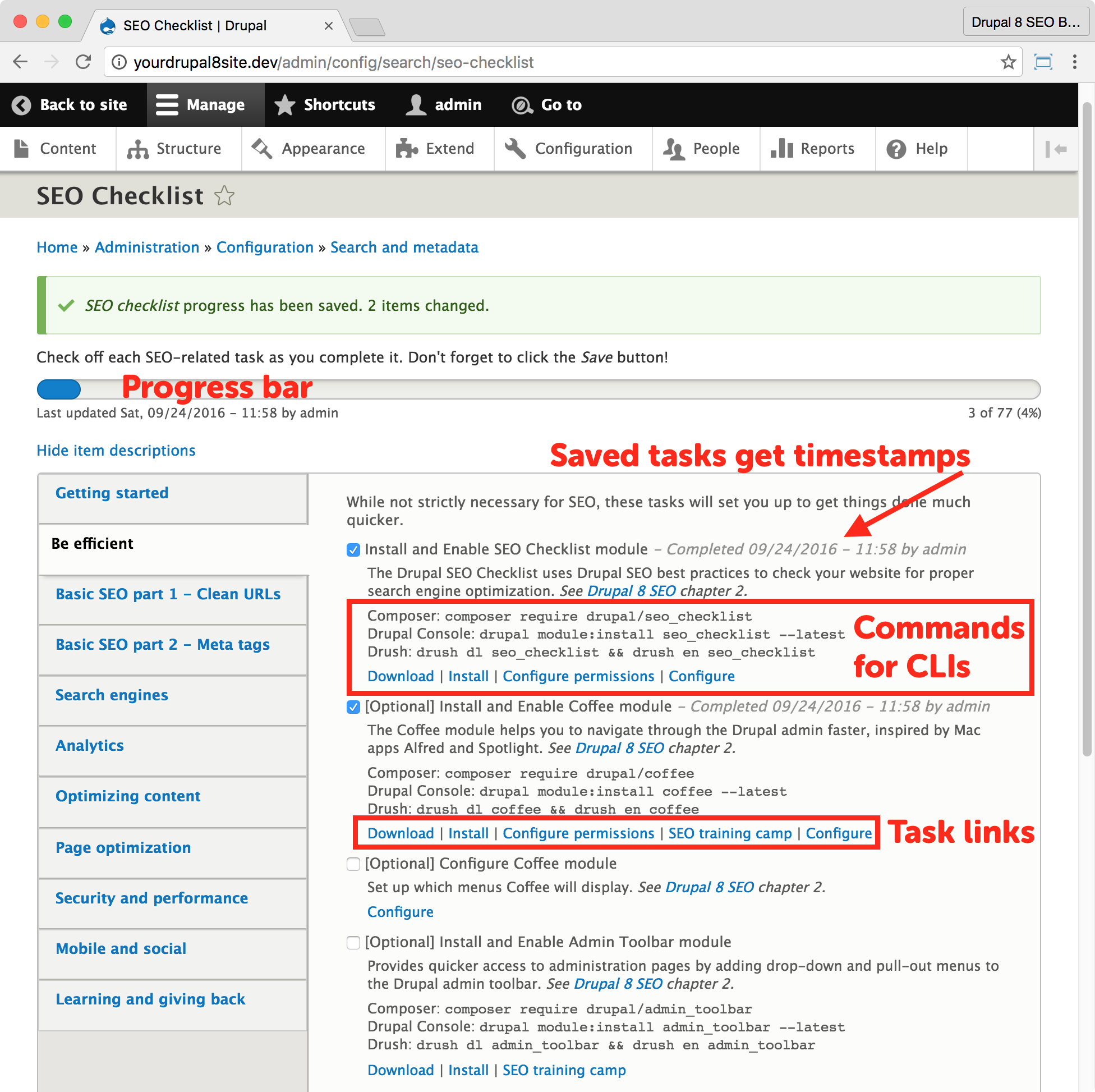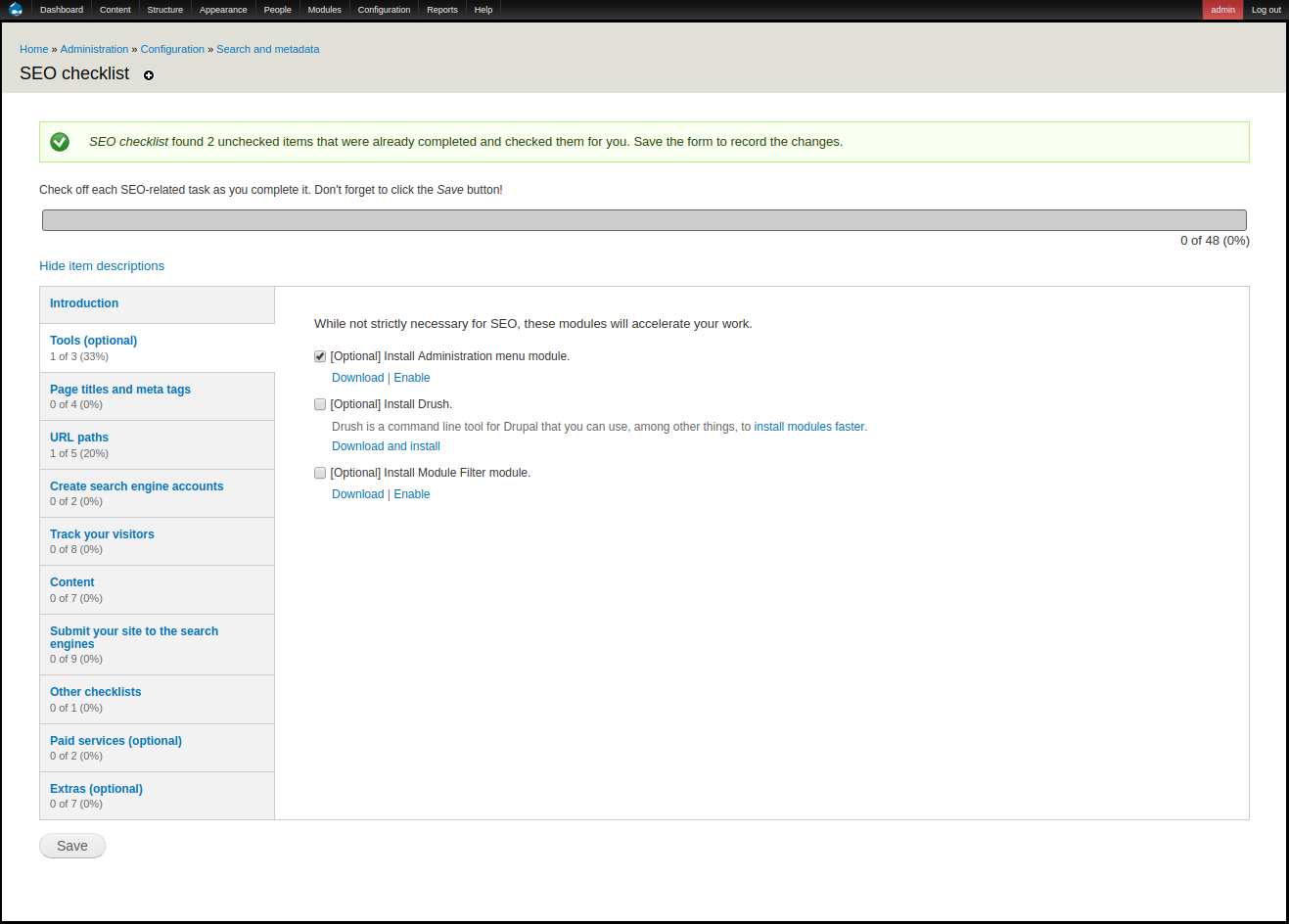Choosing the right SEO tool for Drupal can greatly improve your website’s visibility. With many options available, finding the best one can feel overwhelming.
SEO is essential for online success. It helps your site rank higher in search engines, driving more traffic. Drupal is a powerful content management system, but it needs the right tools to shine. The best SEO tools for Drupal can simplify tasks like keyword research, site audits, and performance tracking.
They can boost your site’s ranking and help you understand user behavior. In this blog post, we will explore the top SEO tools that integrate seamlessly with Drupal. Each tool offers unique features to enhance your website’s performance. Discover how these tools can transform your SEO strategy and lead you to success online.
Top SEO Tools For Drupal
Finding the best SEO tool for Drupal can be tough. Many options exist, but not all are effective. This guide focuses on the top SEO tools for Drupal. It will help you choose the right one for your needs.
Key Features
When selecting an SEO tool for Drupal, consider these key features:
- Easy Integration: The tool should work smoothly with Drupal.
- User-Friendly Interface: A simple layout helps users navigate easily.
- Keyword Management: It should allow tracking and optimizing keywords.
- Analytics and Reporting: Look for tools that provide clear reports.
- SEO Recommendations: Tools should give actionable advice.
Here is a comparison of popular SEO tools for Drupal:
| Tool Name | Integration Ease | User Rating | Price |
|---|---|---|---|
| SEO Checklist | Easy | 4.5/5 | Free |
| Pathauto | Moderate | 4.7/5 | Free |
| Metatag | Easy | 4.6/5 | Free |
User Reviews
User feedback is important when choosing an SEO tool. Here are some common comments:
- SEO Checklist: Users love its simple setup and clear tasks.
- Pathauto: Many appreciate its automatic URL path settings.
- Metatag: Users find it useful for managing tags easily.
Most users agree that having good support is essential. Many tools offer forums and tutorials. These resources help users solve problems quickly. Overall, positive experiences lead to high ratings.
Pathauto Module
The Pathauto module is one of the best SEO tools for Drupal. It helps create clean and readable URLs automatically. Good URLs are important for search engines. They help users understand the content of a page. Pathauto makes this easy by generating URL patterns based on content types. This guide will explore the functionality and best practices of the Pathauto module.
Functionality
The Pathauto module has several key features that enhance SEO. It automatically generates URL aliases for various types of content. This means you do not need to create each URL by hand. Here are some important functionalities:
- Automated URL Creation: Creates URLs based on content types.
- Custom Patterns: Allows users to set patterns for URLs.
- Integration: Works well with other Drupal modules.
- Bulk Operations: Can update multiple URLs at once.
Using the Pathauto module can save time and effort. It ensures that URLs are consistent and user-friendly. For example, a blog post titled “10 Tips for SEO” might have a URL like yourwebsite.com/10-tips-for-seo. This is better than a long, confusing URL.
Best Practices
To get the most from the Pathauto module, follow these best practices:
- Use Clear Patterns: Create patterns that describe the content.
- Keep It Short: Shorter URLs are easier to read.
- Avoid Special Characters: Use dashes instead of underscores.
- Regular Updates: Check and update patterns as needed.
Setting up Pathauto correctly can improve your site’s SEO. Regularly review your URL patterns. Make adjustments if necessary. This keeps your website organized and helps search engines find your content easily.
Metatag Module
The best SEO tool for Drupal is the Metatag module. It helps manage metadata on your website. Metadata is important for search engines. It tells them about your content. This module makes SEO easier for Drupal users. Proper use of metadata can improve your site’s visibility.
Importance Of Metadata
Metadata plays a key role in SEO. It provides essential information about your content. Search engines use this data to rank websites. Here are some reasons why metadata is important:
- Improves Search Rankings: Well-structured metadata helps search engines understand your site.
- Increases Click-Through Rate: Good titles and descriptions attract more visitors.
- Enhances User Experience: Clear information helps users find what they need quickly.
Different types of metadata are essential:
| Type of Metadata | Description |
|---|---|
| Title Tags | Defines the title of your page. |
| Meta Descriptions | Summarizes the content of your page. |
| Meta Keywords | Keywords related to the content of your page. |
Using metadata correctly can lead to better search results. It is essential for any website aiming for online success.
Configuration Tips
Setting up the Metatag module is simple. Follow these tips for effective configuration:
- Install the Metatag Module: Download and enable the module in your Drupal site.
- Access Configuration Settings: Go to the configuration page under the Metatag section.
- Set Global Defaults: Choose default metadata for all pages.
Customize metadata for specific content types:
- Navigate to “Content Types” in your settings.
- Select the content type you want to edit.
- Add unique title tags and meta descriptions.
Remember to test your settings. Use tools like Google Search Console. Check how your pages appear in search results. Adjust your metadata as needed to improve visibility.

Xml Sitemap Module
The best SEO tool for Drupal is the XML Sitemap Module. This tool helps search engines find and index your website. It creates a sitemap that lists all your site’s pages. This makes it easier for search engines to understand your site structure. A well-structured sitemap can lead to better visibility in search results.
Sitemap Benefits
Using a sitemap has many advantages for your website:
- Improved SEO: A sitemap helps search engines index your site better.
- Faster indexing: Search engines discover new pages quickly.
- Clear structure: Sitemaps show the organization of your content.
- Priority setting: You can set the importance of different pages.
- Updated information: Sitemaps can include the last modified date.
Here is a table showing the key benefits:
| Benefit | Description |
|---|---|
| Improved SEO | Helps search engines index your site more effectively. |
| Faster indexing | Ensures new pages are discovered quickly. |
| Clear structure | Shows how your content is organized. |
| Priority setting | Allows you to highlight important pages. |
| Updated information | Includes the last modified dates for pages. |
Setup Guide
Setting up the XML Sitemap Module is simple. Follow these steps:
- Install the Module: Go to your Drupal admin area. Click on Extend. Search for “XML Sitemap.” Install it.
- Configure Settings: After installing, go to Configuration. Find the XML Sitemap settings. Here, you can customize your sitemap.
- Add to Robots.txt: Make sure to add the sitemap link to your robots.txt file. This helps search engines find it.
- Generate Sitemap: You can generate the sitemap manually or set it to update automatically.
- Submit to Search Engines: Submit your sitemap to Google Search Console and Bing Webmaster Tools.
Following these steps will help you set up the XML Sitemap Module effectively. This tool is essential for improving your site’s SEO.
Redirect Module
The best SEO tool for Drupal is important for website visibility. One useful tool is the Redirect Module. This module helps manage URL changes. It keeps visitors on your site. This helps improve user experience and SEO.
Use Cases
The Redirect Module serves various purposes. Here are some common use cases:
- Changing URLs: When a page’s URL changes, set a redirect.
- Removing Pages: Redirect visitors when a page is deleted.
- Fixing Broken Links: Redirect users from old URLs to new ones.
- SEO Optimization: Improve search engine rankings with proper redirects.
Managing redirects helps keep your site organized. It prevents users from landing on broken pages. This leads to a better user experience.
Here is a simple table showing redirect types:
| Redirect Type | Description |
|---|---|
| 301 Redirect | This is a permanent redirect. |
| 302 Redirect | This is a temporary redirect. |
| 307 Redirect | This is also a temporary redirect for HTTP. |
Implementation Steps
Setting up the Redirect Module is simple. Follow these easy steps:
- Install the Module: Download the Redirect Module from the Drupal website.
- Enable the Module: Go to the Modules section in your Drupal admin. Find the Redirect Module and enable it.
- Configure Settings: Access the settings page. Set your preferences for redirects.
- Add Redirects: Use the interface to add new redirects. Input the old URL and the new URL.
- Test Redirects: Check that the redirects work. Visit the old URLs to see if they go to the new ones.
By following these steps, you can effectively manage your website’s URLs. This helps maintain traffic and improve SEO performance.
Google Analytics Integration
Finding the best SEO tool for Drupal can help improve your website. Google Analytics Integration is crucial for tracking your site’s performance. This tool helps you understand visitor behavior and site metrics. Using it correctly can lead to better site management and growth.
Tracking Performance
Tracking performance is important for any website. Google Analytics gives you insights into how users interact with your site. You can see which pages get the most visits. This information helps you make informed decisions.
- Page Views: Understand which pages are popular.
- Bounce Rate: Know how many visitors leave quickly.
- Average Session Duration: See how long users stay on your site.
- Traffic Sources: Find out where your visitors come from.
Using these metrics can help improve your content. You can create more of what your audience enjoys. Better content leads to more visitors and engagement.
Here is a simple table showing key metrics:
| Metric | Importance |
|---|---|
| Page Views | Shows popular content |
| Bounce Rate | Indicates user interest |
| Average Session Duration | Measures user engagement |
| Traffic Sources | Identifies marketing effectiveness |
Setting Up
Setting up Google Analytics on your Drupal site is simple. Start by creating a Google Analytics account. Then, get your tracking ID. This ID is unique to your site. You will need it for the next steps.
Next, install the Google Analytics module for Drupal. This module makes integration easier. After installation, go to the module settings. Enter your tracking ID in the required field.
- Step 1: Create a Google Analytics account.
- Step 2: Get your unique tracking ID.
- Step 3: Install Google Analytics module on Drupal.
- Step 4: Enter tracking ID in module settings.
Once set up, you can start tracking data. Data will appear in your Google Analytics account. Regularly check this data to understand your performance.
Performance Optimization
Choosing the best SEO tool for Drupal can help improve your website’s performance. Performance optimization is key to gaining visitors. This includes techniques like caching and speeding up your site. Caching helps store data for quick access. Speed improvements make your site load faster. Both aspects are essential for good SEO.
Caching Techniques
Caching is an important part of performance optimization. It helps reduce load times and server stress. Here are some common caching techniques:
- Page caching: Saves the full HTML output of pages.
- Block caching: Stores individual blocks of content.
- Views caching: Caches the results of database queries.
- Browser caching: Instructs browsers to store files for reuse.
Using these techniques can lead to better performance. Below is a simple comparison table of caching types:
| Caching Type | Description | Benefits |
|---|---|---|
| Page Caching | Saves the entire page output | Faster load times for users |
| Block Caching | Caches individual content blocks | Improved efficiency on dynamic pages |
| Views Caching | Caches query results from the database | Reduces database load |
| Browser Caching | Stores files in the user’s browser | Less data transfer needed |
Speed Improvements
Improving site speed is crucial for user experience. A fast site keeps visitors engaged. Here are some effective speed improvement methods:
- Image optimization: Use smaller image sizes.
- Minify CSS and JS: Remove unnecessary characters from files.
- Lazy loading: Load images as users scroll.
- Content Delivery Network (CDN): Distribute files across multiple servers.
These methods can significantly reduce load times. Below is a brief overview of how these techniques help:
| Improvement Method | Description | Effect on Speed |
|---|---|---|
| Image Optimization | Compresses images without losing quality | Faster loading of pages |
| Minify CSS and JS | Removes extra spaces and comments | Smaller file sizes |
| Lazy Loading | Delays loading of images until needed | Improves initial load times |
| CDN | Serves files from locations closer to users | Reduces latency and speeds up access |

Frequently Asked Questions
What Is The Best Seo Tool For Drupal?
The best SEO tool for Drupal is the “Pathauto” module. It automatically generates SEO-friendly URLs based on content types. Additionally, “Metatag” helps manage metadata for improved search visibility. Combining these tools enhances your site’s overall SEO performance and helps you rank higher in search results.
How Can I Improve Drupal Seo?
To improve Drupal SEO, start by installing essential modules like “Metatag” and “Pathauto. ” Optimize your content with relevant keywords and ensure mobile responsiveness. Create quality backlinks and regularly update your site. Utilizing these strategies will enhance your visibility on search engines and attract more organic traffic.
Is Drupal Good For Seo?
Yes, Drupal is excellent for SEO. It offers numerous modules that enhance SEO capabilities, such as customizable URLs and meta tags. Additionally, its structure allows for easy management of content, ensuring search engines can crawl your site effectively. Overall, Drupal provides a solid foundation for SEO success.
Can I Use Google Analytics With Drupal?
Absolutely, you can use Google Analytics with Drupal. By installing the “Google Analytics” module, you can easily integrate tracking into your site. This integration allows you to monitor visitor behavior, traffic sources, and conversions. Understanding this data helps you refine your SEO strategies for better results.
Completion
Choosing the best SEO tool for Drupal is essential for success. It helps improve your website’s visibility. The right tool simplifies keyword research and content optimization. Tools like Pathauto, Metatag, and XML Sitemap work well with Drupal. They make managing SEO easier.
Each tool offers unique features for different needs. Take time to explore your options. Find the one that fits your goals best. With the right SEO tool, you can enhance your site’s performance and reach more visitors.
Optimize your Drupal site today for better results tomorrow.
Thank You




Leave a Reply